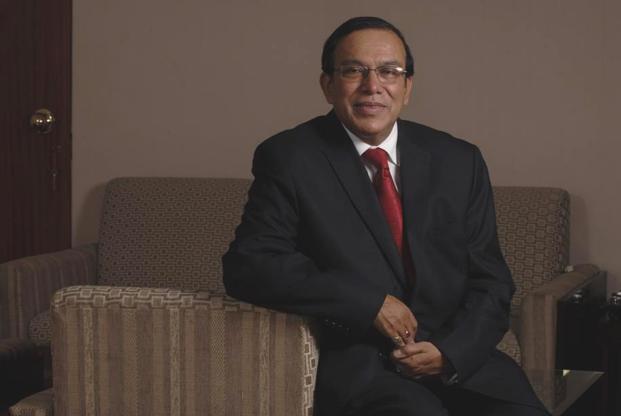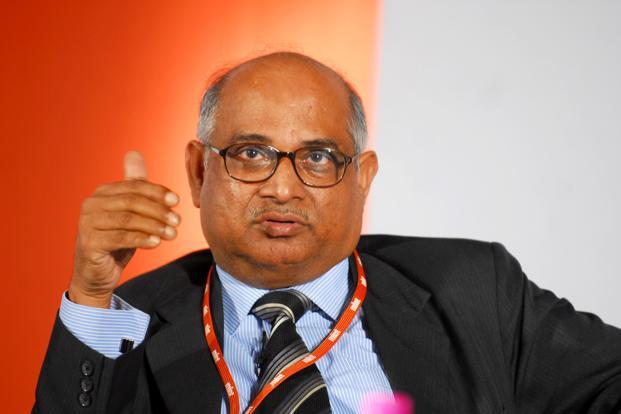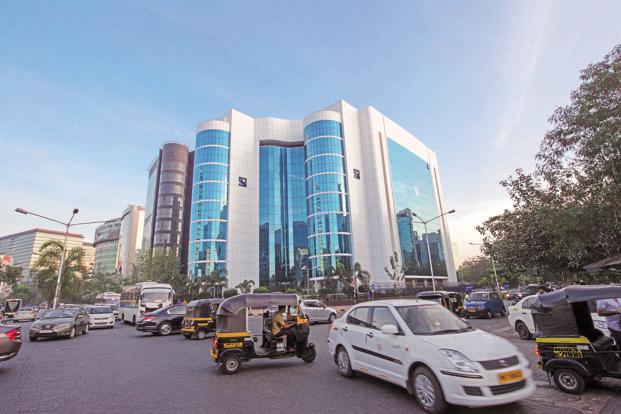In April, Aditi Chaudhuri, a probationary officer (PO) at India’s largest lender by assets, State Bank of India (SBI), was on cloud nine when she learnt that her first posting would be at Faridabad in Haryana. It would be just a 40-minute drive from her Chittaranjan Park home in Delhi. But her father played spoilsport. “Why should she get preferential treatment while all other officers work at locations far away from their homes?” he asked. So Aditi had to report at the bank’s Doiwala branch, some 22km from Dehradun in Uttarakhand.
Her father happens to be the chairman of the bank, Pratip Chaudhuri.
The current SBI boss is a man of impeccable integrity. His colleagues say each time his family uses the office car, he sends a cheque to the administration department.
When I mention this to him, an embarrassed Chaudhuri says he doesn’t want any credit for such things as they are “natural” and have nothing to do with ethics and integrity. We are at The Belvedere at The Oberoi in Mumbai.
Originally from Kolkata, the Chaudhuri family shifted to Delhi in the 1960s when his father, from the Indian Economic Service cadre, joined the Planning Commission. Chaudhuri studied chemistry at St Stephen’s College and followed it up with an MBA in finance and marketing from Panjab University.
He couldn’t take the civil services examination because he was less than 21 years of age in August 1974; so he opted for SBI. The bank had relaxed the entry age for POs to 20 that year. His first meeting with R.K. Talwar, the legendary SBI chairman, at the Jalandhar branch in August 1974 fired his idealism, Chaudhuri says, holding his small 30-year-old Talisker, diluted with water. I am drinking it on the rocks.
photo
Bank on him: Chaudhuri’s toughest assignment was Chennai – he even learnt basic Tamil while he was posted there. Illustration: Jayachandran/Mint
Chaudhuri’s batchmates Diwakar Gupta and Hemant Contractor, and one-year junior A. Krishna Kumar—all three are now managing directors—fought for the top job in December 2010. Technically, Contractor was senior to Chaudhuri as he became a deputy managing director ahead of him.
The clincher was possibly Chaudhuri’s candid answer to Reserve Bank of India (RBI) deputy governor Shyamala Gopinath’s query on why SBI was so aggressive in disbursing home loans. She was unhappy with the bank’s so-called teaser loans, in which a borrower pays a relatively lower fixed interest rate for the initial couple of years and a market-determined rate thereafter. Many borrowers were rushing for SBI’s home loans, enticed by the initial low rate, but the bank was carrying the risk of default. Chaudhuri’s answer was diplomatic: “One way of looking at this is that an artist has fallen in love with his own creation; the other way is, it’s difficult to get off a tiger.”
He took over as chairman in April 2011, but the journey to the corner room was not smooth. His toughest assignment was in Chennai as a chief general manager after he convinced then managing director Ashok Kini that he knew who Anna (C.N. Annadurai, founder of the Dravida Munnetra Kazhagam political party and the first non-Congress leader to form a government in independent India) and Periyar (Periyar Erode Venkata Ramasamy, a social activist who started the Self-Respect Movement) were.
In Chennai, Chaudhuri followed some smart ideas. He learnt rudimentary Tamil. Dialling the six-digit numbers on the IP phone from his room, he used to greet branch managers: “Yepdi irkinge ? (How are you ?)”. All branch managers were given mobile phone handsets and the bank reimbursed their monthly bills up to Rs.1,000. In a hot and humid Tamil Nadu, most branches were air-conditioned.
Chaudhuri went all out for gold loans, a big business for non-banking financial companies (NBFCs) in the southern state, by rewarding people for achieving their targets. This was combined with innovative marketing ideas. For instance, instead of saying 9% interest rate on gold loans, the bank sold the concept of 75 paise monthly interest for a Rs.100 loan while NBFCs were charging Rs.2-3. Posters advertising gold loans were pasted at the back of the driver’s seat in buses and next to the posters of popular Tamil movies. Banners were put up at bus terminals in Chennai and loans were given in 10 minutes flat because borrowers coming from rural Tamil Nadu couldn’t afford to lose a day’s wage chasing the bank.
“”
–
The Chennai circle topped the performance chart on many business parameters, but Chaudhuri wasn’t promoted. Instead, he was sent to oversee the integration of State Bank of Saurashtra, an associate bank, with SBI in 2008, as an officer on special duty. He galvanized the employees (there were 6,500 of them) by narrating how Sardar Vallabhbhai Patel unified Bhavnagar, a princely state in Gujarat, with independent India—the first such state to do so. He ate lunch with his subordinates and air-conditioned the bank branches, winning many hearts—and the merger was completed within the stipulated time, despite a few strikes. This time, Chaudhuri got his reward—he was made head of the international banking group, the most glamorous portfolio in SBI.
As chairman, his first task was to improve the relationship with RBI, which had touched its nadir during his predecessor’s time. He also cleaned up the balance sheet by setting aside a hefty amount for employee pension liabilities, something that should have been done earlier. Now, he faces the challenge of rising bad loans; investors are punishing the bank hard for this. SBI is no longer India’s biggest bank in market capitalisation.
His term will end in September 2013. Does he have enough time to change the 206-year-old bank for the better? In the June quarter, its net profit was Rs.3,752 crore, and Chaudhuri says about Rs.4,000 crore net profit is the “new normal” for SBI. Here is his arithmetic: On a Rs.8,500 crore quarterly operating profit, the bank will keep aside Rs.2,500 crore for loan losses. This will bring down the pre-tax profit to Rs.6,000 crore; after paying about Rs.2,000 crore tax, the net profit will be around Rs.4,000 crore. “In terms of net profit, we will be next to ONGC (Oil and Natural Gas Corp. Ltd),” he says. But it can happen only if he is able to contain the bad loans.
Except for technology, Chaudhuri is thorough with almost every aspect of banking. That’s his greatest strength and also a weakness, as some of his colleagues dub him a micromanager. At the same time, they say, he is a complete team man.
We order rasmalai for dessert after eating tandoori roti with methi-chicken and rice with Malabar shrimp curry. Chaudhuri says he needs to look after the last mile when bad assets are growing. “Do you know we lost Rs.1,000 crore because our dealers weren’t judicious while investing in stocks? We have made a rule that investments can be done only in Nifty 50 firms,” he says. The bank now gives Rs.100 crore each to four dealers for investing in the market. At the end of every month, the worst performer loses 20% of his investment kitty to the best performer.
As we prepare to leave, I notice the rings on four fingers of his right hand. While one is made of iron, three others carry stones—ruby, coral and emerald. His wife made him wear these when he was sent to State Bank of Saurashtra. Have they worked? “Look at where I am today,” Chaudhuri says with a disarming smile.



